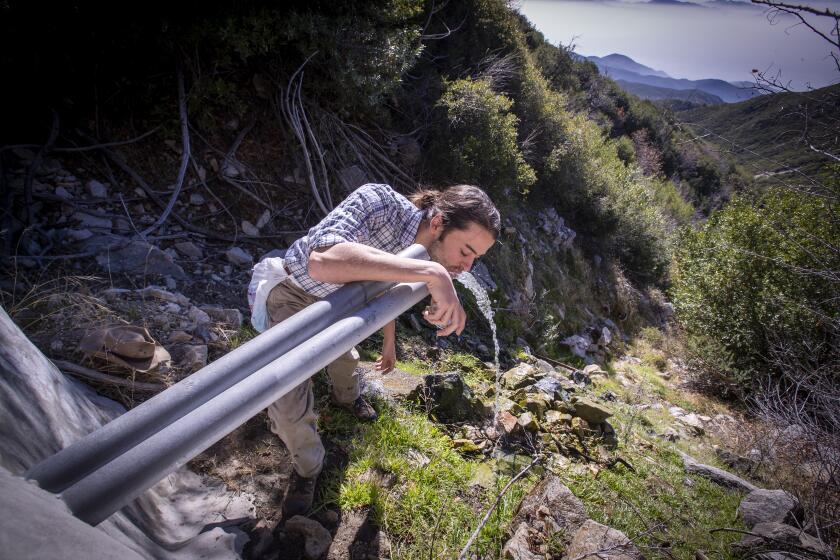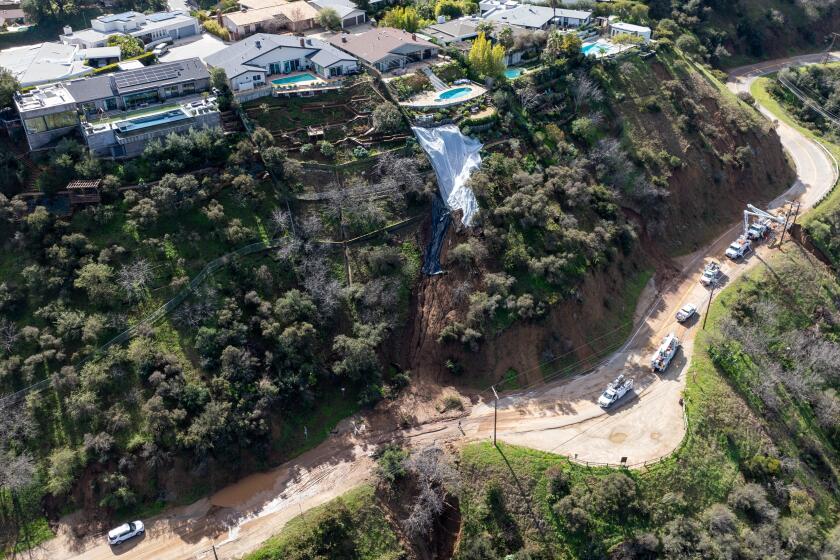Researchers Say State Must Act Now to Avert Garbage Crisis in ‘90s
Every Californian produces an average of 1.5 tons of trash each year and the state is moving toward a garbage crisis, Senate researchers say.
“At that rate, every landfill in the state will be closed by 1997, all things remaining as they are,” the staff of the Senate Special Committee on Solid and Hazardous Waste said in a recent report.
The 97-page report on population, air, waste, energy, fuels and agriculture recommended that the capacities of the state’s 211 landfills might be extended by recycling, composting, reducing waste and waste-to-energy conversion projects.
All of the options are better explored now than later, said Sen. Rose Ann Vuich (D-Dinuba), committee chairwoman.
Problems Aplenty
“A lot of records show where we are today but don’t show where we will be 20 years from today, and whether we will be able to meet needs,” Vuich said upon releasing the report last week. “We have problems coming up and we have to be ahead of them.”
Based on information from state and federal agencies, the report also forecast that:
- Air quality, which has been improved over the last decade, will deteriorate in the 1990s, with health risks and crop losses, unless better pollution controls are developed.
- California will have a surplus of energy into the 21st Century, with increasing dependence upon out-of-state sources, but must solve the problem of disposing of nuclear waste.
- Alternative fuels such as methanol will be needed to reduce increasing dependence upon foreign oil and smog from an expected 20% to 50% increase in vehicle miles traveled.
- California growers will have to seek new crops to increase their diversity and export potential, and lessen dependence upon government price supports for traditional crops.
- California’s population will grow by 13.3 million from 1985 levels to 39.6 million people by the year 2020--a 50% increase. Of those, 3.3 million will be over the age of 64.
The report suggested that some waste disposal and energy problems might be diminished simultaneously by breaking new ground in agriculture, which is expected to remain California’s leading money-maker into the 21st Century.
For example, the committee staff described a company’s plans to build 15 co-generation plants over a five-year period, all to be “fueled entirely by farm-grown sweet sorghum without the use of federal or state farm support dollars.”
Ethanol in the Bargain
Besides producing electricity, each plant annually would yield 6 million gallons of ethanol, 119,000 tons of carbon dioxide for commercial use and about 8,000 tons of high-quality cattle feed. The electricity produced would replace 275,000 barrels of oil, and 115,484 barrels of ethanol added to gasoline would give the community the equivalent of 1.5 million barrels of lead-free gasoline.
Such projects presumably could be carried out in the Central Valley, which is expected to grow by 84% by 2020, a rate second only to that of the Sierra Nevada foothills where population growth of 200% is projected--highest of any region in the state.
The effect of air pollution from such projects is undetermined, but Air Resources Board researchers believe that current ozone concentrations already are inflicting heavy losses on farm crops.
Such losses estimated by the statewide Air Pollution Research Center, based on typical ozone concentrations, are for alfalfa hay, 9%; dry beans, 23%; sweet corn, 7%; cotton, 20%; grapes, 21%; lemons, 28%; onions, 23%; oranges, 19%, and rice, 10%.
More to Read
Start your day right
Sign up for Essential California for news, features and recommendations from the L.A. Times and beyond in your inbox six days a week.
You may occasionally receive promotional content from the Los Angeles Times.






